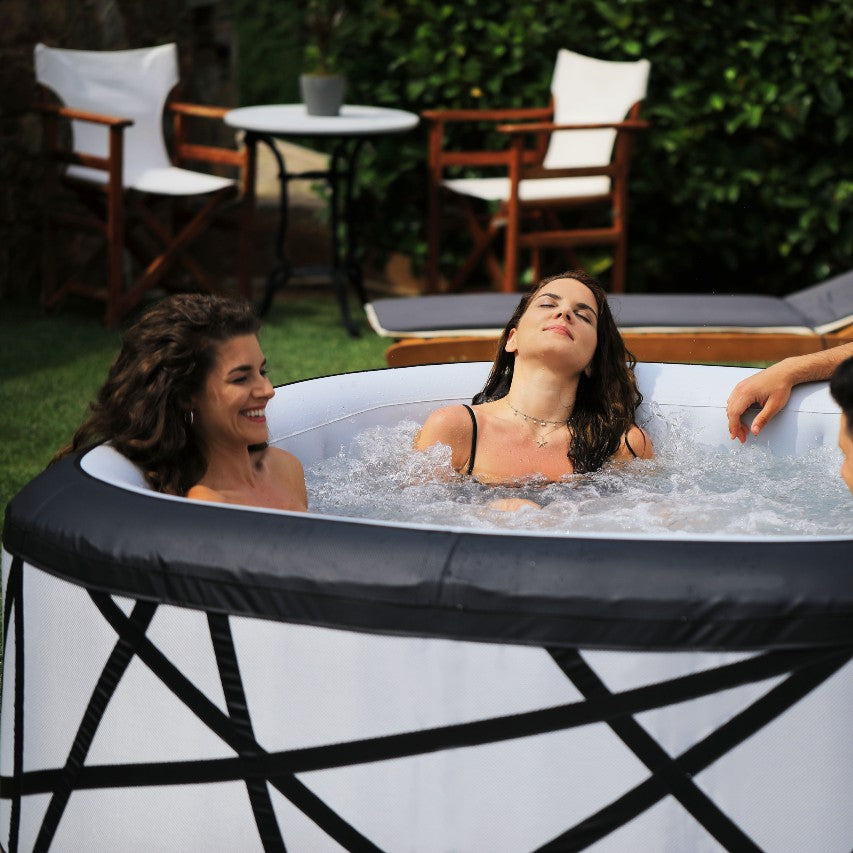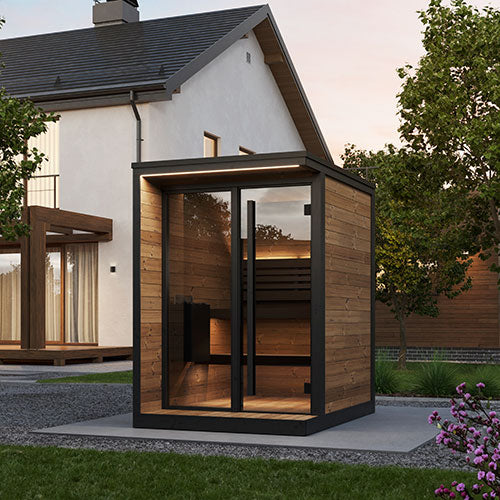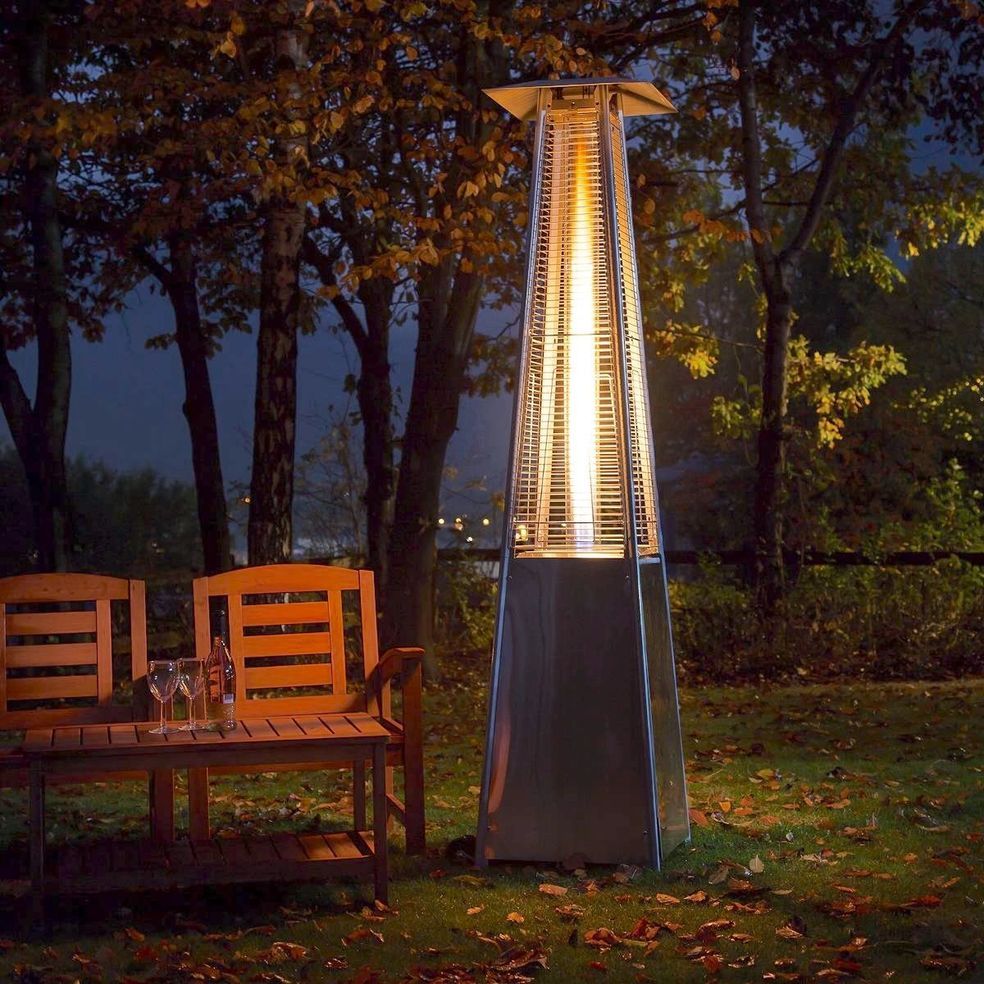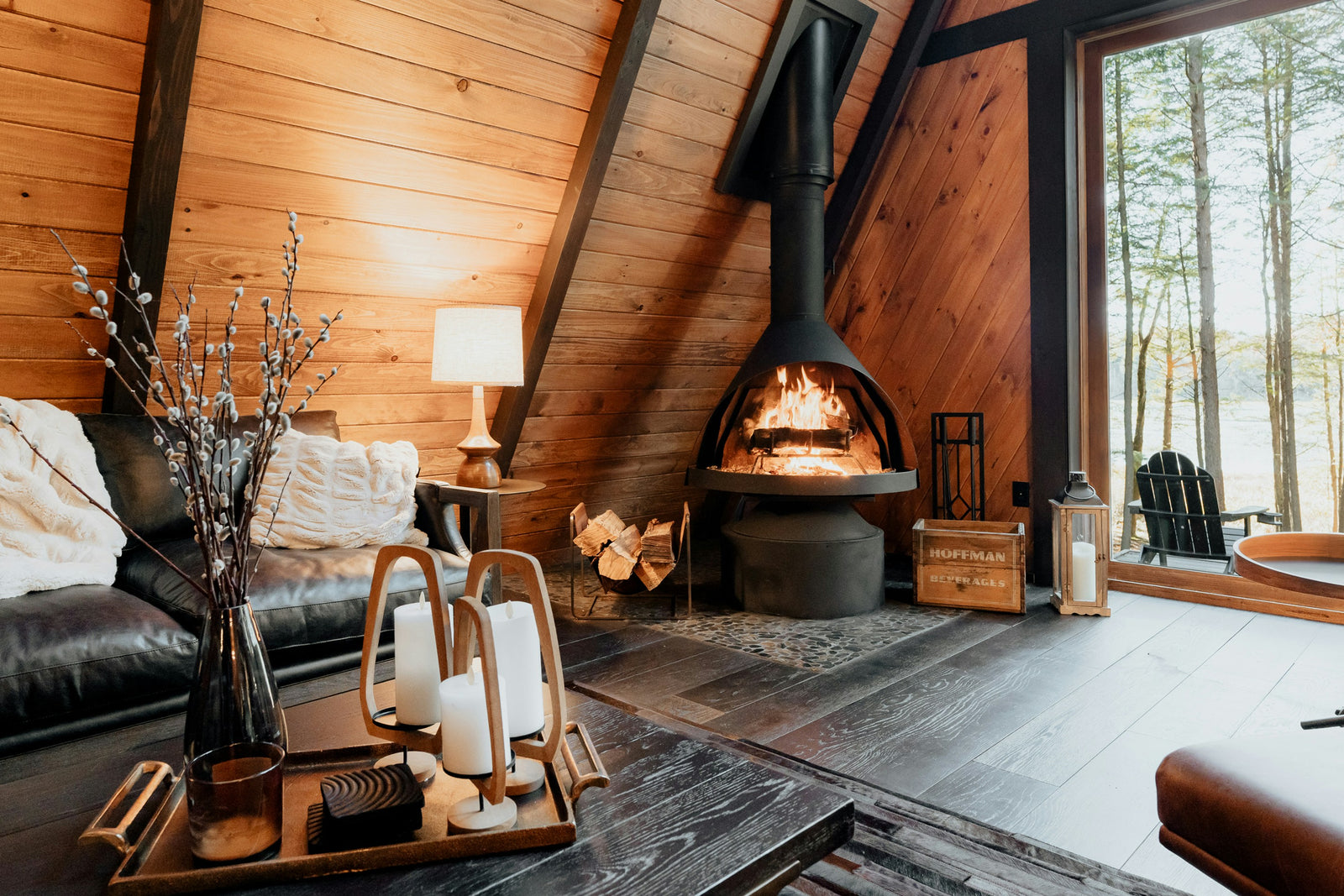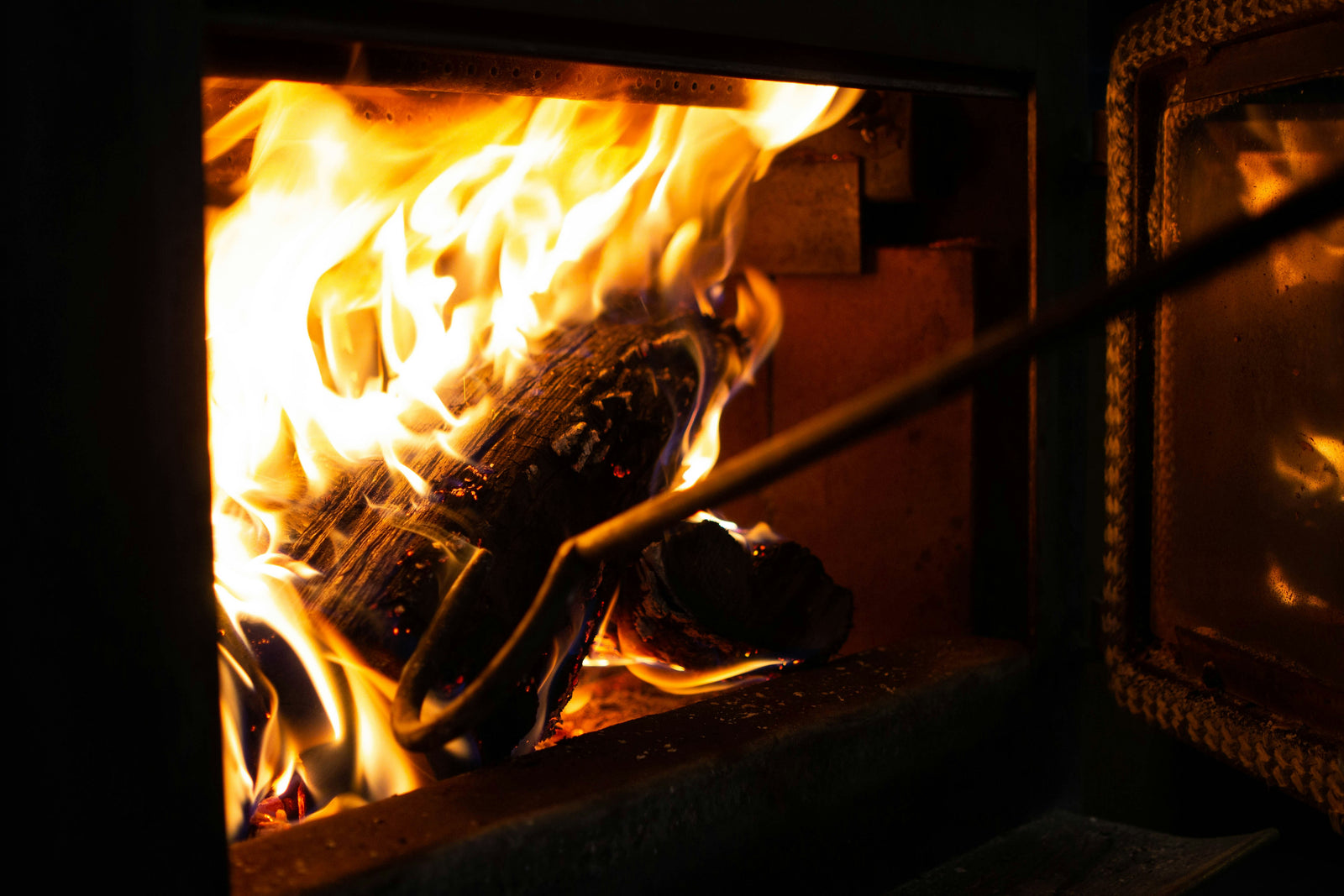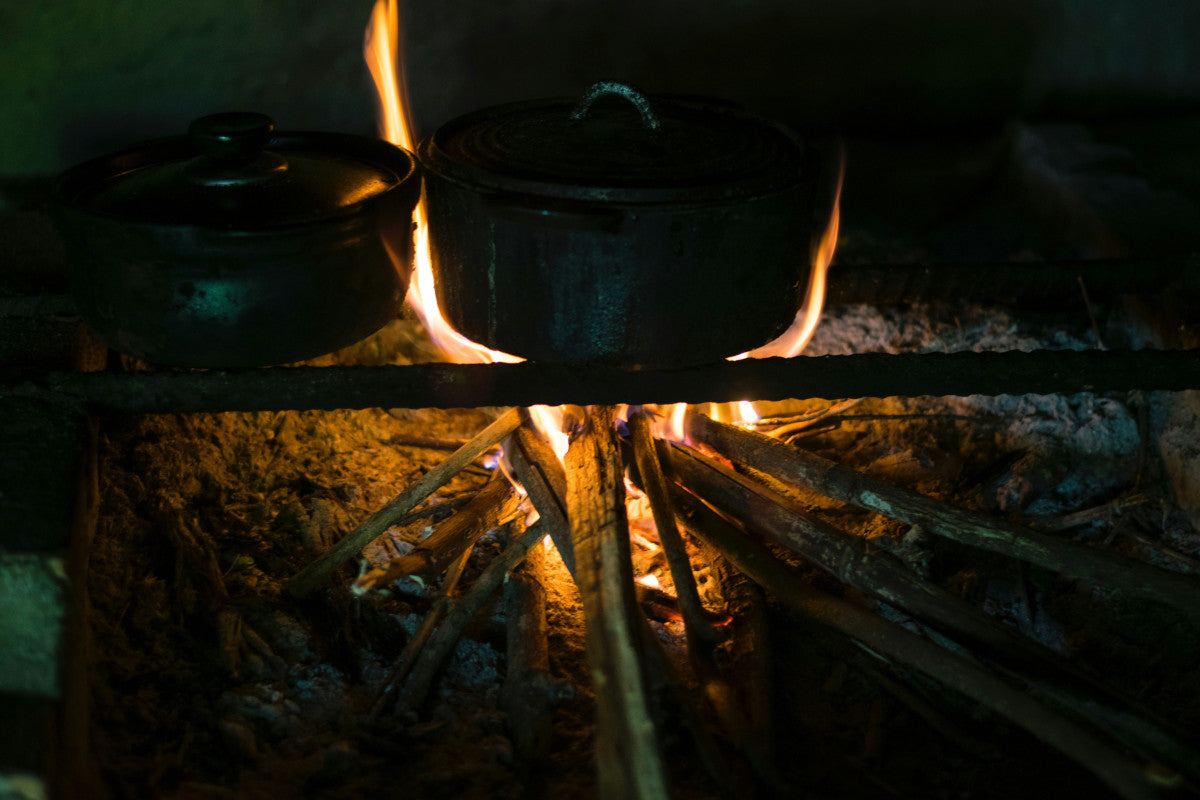
Whether you’re building a new home from scratch or replacing an antiquated heating system, you have a variety of options at your disposal.
Two of the most common are the pellet stove vs wood stove. But what’s the difference, and which is right for your home? This wood stove vs pellet stove comparison guide will leave you with a clear understanding of where each has an edge so you can make a decision.
Pellet stoves use compressed wood or biomass pellets as fuel, automatically fed into the stove's combustion chamber, while wood stoves burn traditional logs, providing a more hands-on, classic heating experience.
While each has its place, you really can’t beat the warmth, ambiance, and eco-friendly heating solution that is a wood-burning stove. It’s hard to match the cozy environment these create. Learn more about the nuances between each stove below or browse our wood stoves online!
| Criteria | Wood Stove | Pellet Stove |
|---|---|---|
| Efficiency | 60% to 80% efficiency, depending on the type of wood and maintenance. | 70% to 90% efficiency due to consistent pellet size and moisture content, and automated feeding system. |
| Ease of Use and Convenience | Requires sourcing, chopping, and storing firewood. Needs frequent monitoring and maintenance. | More convenient, with automated feeding and less frequent cleaning. Easier to store pellets. |
| Environmental Impact | Carbon-neutral, but can produce smoke and particulates. EPA-certified models recommended. | Eco-friendly, using wood waste pellets with fewer emissions. Often meets strict air quality standards. |
| Aesthetics and Ambiance | Provides a rustic ambiance with a visible, crackling fire. Variety of designs available. | Visible flame but less dynamic, a bit more boring. Fan noise and mechanical sounds may detract from the experience as well. |
| Cost Considerations | Typically more affordable, especially if wood is easily accessible. Installation costs can add up. | Generally more expensive with higher upfront and operational costs. Requires ongoing purchase of pellets. |
| Reliability | Highly reliable, does not require electricity to operate. Fewer components mean fewer potential issues. | Depends on electricity, with potential issues during power outages. More complex with more components. |
| Safety | Operates at higher temperatures, risk of burns and creosote buildup. Routine maintenance needed. | Operates at lower temperatures, with automatic shutoff features. Risk of malfunction if not maintained properly. |
What is the Difference Between a Pellet Stove and a Wood Burning Stove?
So, what is the difference between a pellet stove and a wood-burning stove? Ultimately, it comes down to fuel source and convenience. We’ll show you how each style works below before comparing and contrasting them side by side.
How Pellet Stoves Work
Pellet stoves operate using a hopper that stores the pellets and automatically feeds them into the combustion chamber via an auger. This controlled feeding mechanism creates a consistent burn, which is regulated by the stove's thermostat or control panel.
The pellets are ignited either manually or by an automatic igniter once they enter the combustion chamber. Then, a fan circulates the heated air throughout the room.
Pellet stoves are known for their efficiency, as the fuel is highly compressed and burns at a steady rate. They produce minimal ash and require less frequent cleaning, which is why they’re such a popular modern home heating solution.
How Wood Stoves Work
Now, let’s look at the other side of the wood stove vs pellet stove comparison. This style functions by burning logs through a more traditional method.
The heat generated by the burning wood radiates out from the stove, warming the room. Wood stoves require manual intervention to maintain the fire, including adding logs as needed and adjusting the airflow to control the intensity of the burn.
The airflow is managed through dampers, which can be adjusted to increase or decrease the oxygen supply. This regulates the temperature and burn rate.
What really sets wood stoves apart is the cozy, natural ambiance they create, with the crackling sound and glowing flames providing a rustic, comforting atmosphere. This takes you back to simpler times, and yet, you still enjoy the modern comfort of a warm home.
Wood Stove vs Pellet Stove: Which is Better?

You might be leaning towards a pellet stove vs wood stove already after seeing the differences in how they operate. But if not, we’ll leave you with a clear understanding of which is right for you below.
Let’s see how these two solutions stack up based on the most important criteria in a home heating solution, from efficiency and convenience to aesthetics, cost, and more.
Efficiency
Modern wood stoves have efficiency ratings between 60% and 80%. The actual efficiency largely depends on the type of wood used, the moisture content of the wood, and how well the stove is maintained. Hardwoods like oak and maple burn hotter and longer than softwoods.
On the other hand, pellet stoves have efficiency ratings ranging from 70% to 90%. This is because pellet stoves use compressed pellets made from wood waste, which have a consistent size and moisture content. The automated feeding system ensures a steady burn, maximizing heat output and reducing waste.
Pellet stoves also have a built-in thermostat, which allows for precise temperature control. The controlled burn in a pellet stove produces less smoke and fewer particulates, making them a cleaner option in terms of air quality as well.
Ease of Use and Convenience
Operating a wood stove means you must source, chop, and store firewood, which can be time-consuming and labor-intensive. You also need to periodically add logs to the fire and adjust the dampers to regulate the airflow.
Starting a fire, maintaining it, and cleaning out the ashes are also part of the routine. While some homeowners see this as a hassle, it can become an enjoyable ritual for many others.
This is where pellet stoves have the biggest edge over wood-burning stoves. They’re as convenient a stove as you have access to, as the pellets come in bags that are easy to store and handle.
You can load up the hopper with enough pellets to last for several hours or even days depending on the size of the hopper and the heat setting. Once you get the fire ignited, you don’t have to worry about it. The stove will automatically maintain consistent heat output.
Cleaning is also easier with pellet stoves, as they produce less ash and require less frequent emptying of the ash pan. So if you’re looking for the most hands-off heating method, the verdict between a pellet stove vs wood stove is clear.
Environmental Impact
Wood stoves are a great choice from an environmental perspective. Burning wood is a carbon-neutral process because the carbon dioxide released during combustion is roughly equal to the amount absorbed by the tree during its growth.
However, traditional wood stoves can produce quite a bit of smoke and particulate matter, contributing to air pollution. That’s why if you choose a wood stove you’ll need to do your due diligence and invest in an EPA-certified stove that burns the wood more completely.
Pellet stoves are also an environmentally friendly choice. The pellets tend to be made from compressed sawdust and wood waste, which would otherwise be discarded. This reduces the amount of waste in landfills and makes use of a renewable resource.
Plus, pellet stoves produce fewer emissions than wood stoves because the pellets burn more completely and efficiently. Many are EPA-certified and meet strict air quality standards, too.
Ultimately, you’re getting an eco-friendly heating solution regardless of which you choose between a wood stove vs pellet stove. If we had to give an edge, pellet stoves would have a slight advantage.
Aesthetics and Ambiance
Perhaps the most compelling reason to invest in a wood stove is for the rustic ambiance it creates in your living space. The sight, sound, and smell of a wood-burning fire create a sense of warmth and coziness that is hard to replicate with other heating methods.
Wood stoves also come in a variety of designs, from traditional cast iron models to more modern, sleek designs. They tend to be the focal point in a room.
Pellet stoves still provide warmth and a visible flame, but the experience is much different from that of a wood stove. The flame in a pellet stove is typically smaller and less dynamic than in a wood stove.
Some also find that the sound of the blower fan and the mechanical operation of the stove can detract from the natural ambiance that a wood stove provides.
Cost Considerations
Ultimately, your budget will be a big determinant of whether you choose a wood burning stove vs pellet stove. Both can be a costly addition to your home, but a wood stove tends to be a more affordable option.
Basic models can start at a few hundred dollars, while high-end models can cost several thousand dollars. Installation costs can also add up, especially if you need to install a chimney or make structural changes to your home.
You should account for the ongoing costs of operating one of these stoves, too. If you have access to free or low-cost wood, a wood stove can be an economical heating option.
Pellet stoves are typically more expensive, with prices starting at around $1,500 and working well above $4,000 - that does not account for installation costs, either, which can be a bit more given the complexity of these more sophisticated heating systems.
A pellet stove costs more to operate as well. A 40-pound bag of pellets can cost as much as $10, and you might go through several bags a week during the winter season.
Reliability
If you invest in a quality unit you can enjoy reliability regardless of whether you choose a pellet stove vs wood stove. However, wood-burning stoves are seen as more dependable since they don’t require an electrical source to operate.
Pellet stoves rely on electricity to power the hopper, auger, and blower fan. If the power goes out, your pellet stove will stop working unless you have a battery backup or generator.
Areas that are prone to power outages should choose a wood-burning stove for this reason. These stoves also have far fewer components than their pellet stove counterparts, which means there are fewer issues that could arise as well.
Safety
Safety should always be at the forefront of your decision, and both pellet stoves and wood stoves can be fairly safe when used properly.
The only reason a wood-burning stove might be a bit more concerning is because it operates at higher temperatures, which can cause burns. These stoves also generate creosote, which can build up in the flue and raise the risk of chimney fires - that’s why routine maintenance is so crucial.
Pellet stoves operate at lower temperatures and have automatic shutoff features. However, because they rely on electrical components, there is a slight risk of malfunction or fire if the stove is not properly maintained.
So, Which is Better: Wood Burning Stove vs Pellet Stove?
There you have it - everything you need to know about choosing between a pellet stove vs wood stove. We hope you have a clear understanding of where each has an edge over the other, and which is right for you. Here are the key takeaways:
- Choose a Wood Stove If: You want the traditional experience of burning wood, enjoy the ambiance of a crackling fire, and have access to a reliable source of firewood.
- Choose a Pellet Stove If: You prioritize convenience, efficiency, and ease of use. Pellet stoves are better suited for those who prefer a more automated heating solution with consistent temperature control.
If you decide to go with a wood stove, you’re in luck. Our Buck Stove selection here at Outdoor Direct features the best small wood stoves on the market from America’s most trusted stove manufacturer since 1975.
These stoves are available in catalytic, non-catalytic, and zero-clearance models depending on your unique needs and preferences. Efficiency ratings can be as high as 80% and many of these stoves are EPA-certified.
You can customize the color of the stove to meet your preferences, and effortlessly adjust heat output after installation. Whether you’re looking for small wood stoves for cabins, wood stoves for tiny homes, or wood stoves for mobile homes, we’ve got a model for you.
Plus, shopping at Outdoor Direct gets you access to the lowest prices online and we’ll even cover the shipping costs for you. Browse our catalog or reach out today for a personalized recommendation!
Bringing Our Pellet Stove vs Wood Stove Comparison to a Close
It’s clear that both wood-burning stoves and pellet stoves have their pros and cons, and only you can determine which is the optimal solution for your home.
Whether you enjoy the traditional charm of a wood stove or the modern convenience of a pellet stove, both options can provide warmth, comfort, and a cozy atmosphere to your living space.
As we wrap up our wood stove vs pellet stove comparison, the only thing left to do now is take the next step towards heating your home. For wood-burning stoves that deliver efficient, long-lasting performance without breaking the bank, look no further than Outdoor Direct.
With the best products from the most trusted brands at low prices backed by unbeatable service, what more could you ask for? Upgrade your home heating today!

